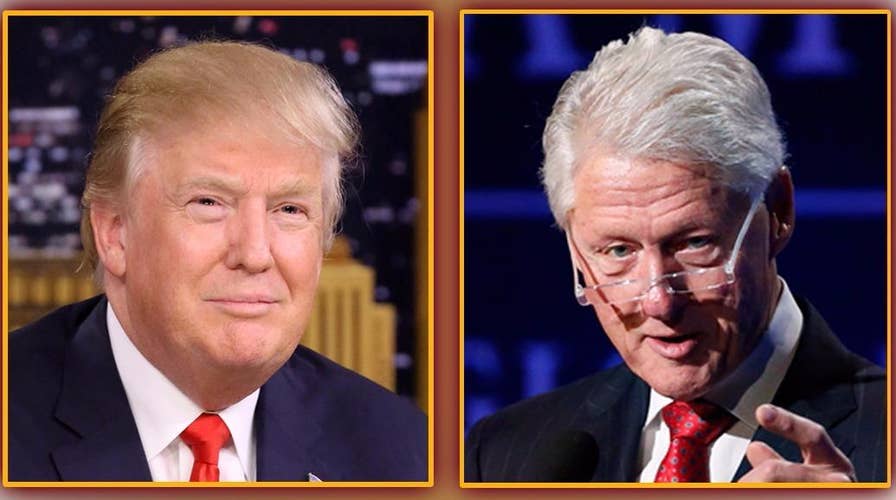Trump hammered for budget cuts, but Clinton did the same
Bias Bash: Ellen Ratner weighs on the media hammering White House over its plan
President Trump is taking a beating in the press for plans to pursue significant cuts to the federal bureaucracy. But despite the outrage, he's actually taking a page from President Bill Clinton, whose brash efforts to streamline government in the 1990s were praised not so long ago.
The popular president famously declared at his 1996 State of the Union address: “The Era of Big Government is over.”
A report that same year from then-Vice President Al Gore touted the closing of 2,000 field offices, as well as 200 programs and agencies across government. Hundreds of thousands of jobs were eliminated.
Fast-forward two decades. Trump's looming budget plan being presented to Congress later this week is being portrayed as a sort of Beltway Armageddon.
The Washington Post predicted Trump’s budget will “shake the federal government to its core.”
A Minneapolis Star Tribune editorial, while echoing conservative concerns that the budget would not cut entitlements (the biggest drivers of the debt), warned Trump’s plan to zap foreign aid would “rob the State Department of its best leverage and create greater instability in the world.”
Government employee unions also have cried foul.
J. David Cox, president of the American Federation of Government Employees, said: “Many of the federal agencies that would be targeted by these budget cuts already have been cut to the bone this decade as a result of harmful austerity policies.”
And CNN reported, in graphic terms, that Trump is planning to “dismember government one dollar at a time.”
“Slicing up government power is part of a deeper antipathy towards institutions and the political establishment that runs deep in the Trump White House,” the article says.
While administration officials say budget numbers are still in flux, the Post reported that advisers have considered cutting the Department of Housing and Urban Development by $6 billion, Environmental Protection Agency staff by 20 percent and the Commerce Department’s budget by 18 percent.
Expectations of major cuts are well-founded. White House Chief Strategist Steve Bannon has described their goal as “the deconstruction of the administrative state.”
But the dire predictions pertain to goals strikingly similar to what the Clinton administration tried to accomplish, working with the other side of the aisle.
In the opening paragraph of his 1996 report on the progress of the National Government Review, future Democratic presidential nominee Al Gore hailed in the opening paragraph that the “Clinton-Gore Administration [sic] has made the federal government smaller by nearly a quarter of a million jobs.”
“This is the largest, swiftest government-wide cut in the history of the United States. It’s not just a post-Cold War defense reduction; every department except Justice has become smaller,” he wrote.
The ensuing lines, at times, sound more like Sen. Rand Paul, R-Ky., or a member of the House Freedom Caucus than a Democratic vice president.
“President Clinton and I are just as proud of making government work better as we are of making it smaller. It isn’t good enough yet, or small enough yet, but we sure have things headed in the right direction,” he said.
If anything, the Clinton administration's budget ax had a broader sweep.
In terms of spending cuts, the Trump administration has indicated non-discretionary spending, including entitlements, will remain untouched. That was not the case under Clinton.
Under a deal hashed out with then-Speaker Newt Gingrich, a budget agreement in 1997 cut (or rather, reduced the growth rate of) discretionary spending by $138 billion over a five-year period. It also cut Medicare spending by $115 billion, Medicaid by $14 billion and other mandatory spending by $40 billion.
The Clinton-era deal also cut military spending significantly, while Trump is pushing for a roughly $54 billion increase in military spending.





